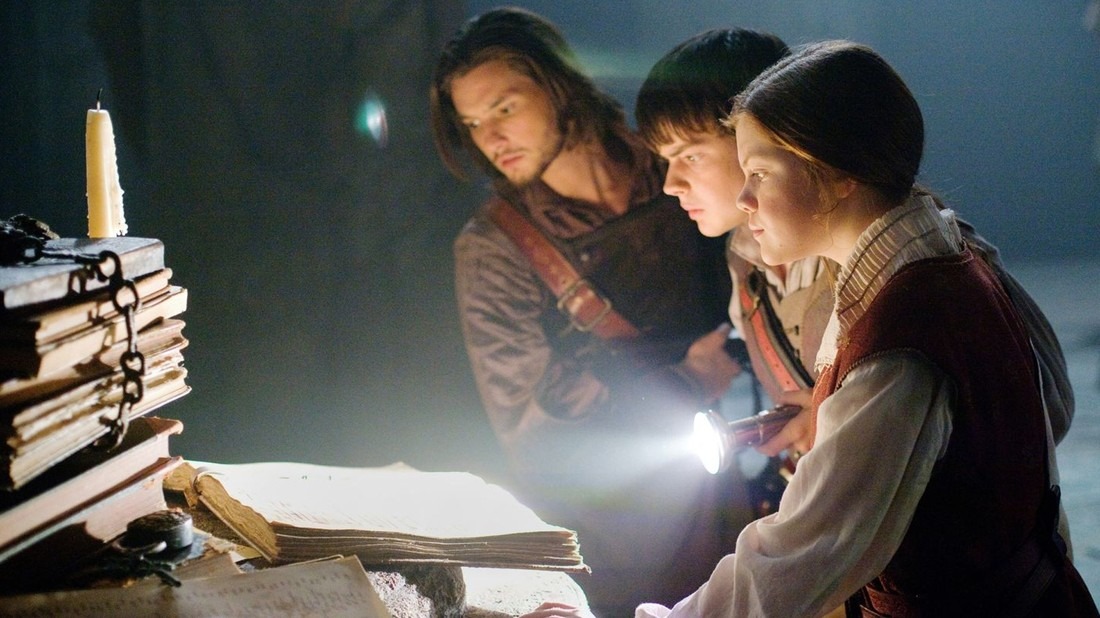The Chronicles of Narnia: The Voyage of the Dawn Treader (2010)

“The Chronicles of Narnia: The Voyage of the Dawn Treader,” released in 2010 and directed by Michael Apted, is the third installment in the film adaptation of C.S. Lewis’s beloved fantasy series. Building upon the rich narrative of its predecessors, The Voyage of the Dawn Treader continues to explore the magical world of Narnia, introducing new adventures while delving deeper into themes of courage, redemption, and personal growth. This essay examines the film’s thematic elements, narrative structure, and cinematic achievements, highlighting its contribution to the Narnia franchise and its appeal to audiences.
The story begins with Lucy (Georgie Henley) and Edmund Pevensie (Skandar Keynes) returning to Narnia, accompanied by their annoying cousin Eustace Scrubb (Will Poulter). They are magically transported to Narnia aboard the ship The Dawn Treader, commanded by Prince Caspian (Ben Barnes). The film follows the crew’s quest to find the seven lost lords of Narnia, who were exiled by the evil White Witch. As they journey across uncharted waters, they encounter fantastical creatures and face various trials that test their bravery and character. Along the way, Eustace undergoes a significant transformation, both literally and metaphorically, as he learns valuable lessons about humility and redemption.

One of the central themes of The Voyage of the Dawn Treader is the journey of personal transformation. Eustace Scrubb’s character arc is particularly noteworthy, as he evolves from a selfish and obnoxious boy into a more self-aware and considerate individual. His transformation into a dragon and subsequent redemption arc serve as powerful metaphors for inner change and the potential for personal growth. Eustace’s experience underscores the film’s message that even the most flawed individuals can find redemption through courage and self-reflection.
Another prominent theme is the concept of courage in the face of adversity. The film portrays various forms of bravery, from physical combat to the moral courage required to confront one’s fears and insecurities. Prince Caspian’s leadership, Lucy’s determination, and Edmund’s bravery all illustrate different facets of courage. The trials faced by the characters, including encounters with dark forces and personal temptations, highlight the importance of resilience and the strength to confront challenges head-on.

Visually, The Voyage of the Dawn Treader continues the franchise’s tradition of creating immersive and imaginative worlds. The film’s special effects and production design are key to bringing the fantastical elements of Narnia to life. The depiction of mythical creatures, enchanted landscapes, and the grandiose ship itself contribute to the film’s magical atmosphere. The use of CGI enhances the visual experience, particularly in scenes involving dragons, sea monsters, and other fantastical beings.
The film’s cinematography, by Dante Spinotti, captures both the grandeur of Narnian landscapes and the intimate moments of character development. The sweeping vistas of the ocean and the detailed design of the various islands visited by the crew add to the sense of adventure and exploration. Additionally, the film’s score, composed by David Arnold, complements the narrative with its epic and emotional themes, further immersing the audience in the story.

The performances in The Voyage of the Dawn Treader are integral to the film’s emotional depth. Ben Barnes’s portrayal of Prince Caspian reflects a mature and capable leader grappling with the responsibilities of his role. Georgie Henley and Skandar Keynes continue to embody their characters with sincerity and growth, while Will Poulter’s performance as Eustace Scrubb stands out for its range and transformation. Poulter’s ability to convey Eustace’s internal struggle and eventual redemption is a testament to his acting skills and adds a layer of depth to the film’s narrative.
The film has been praised for its engaging story and ability to appeal to both young audiences and adults. It successfully balances action, adventure, and moral lessons, making it a meaningful addition to the Narnia series. The exploration of themes such as redemption and the transformative power of courage resonates with viewers, reinforcing the film’s relevance and impact.
In conclusion, The Chronicles of Narnia: The Voyage of the Dawn Treader (2010) is a captivating continuation of C.S. Lewis’s fantasy saga, rich with themes of personal growth, courage, and redemption. Through its engaging narrative, impressive visual effects, and strong performances, the film offers an adventurous and thought-provoking experience. Its exploration of the human condition, combined with its imaginative world-building, solidifies its place as a cherished installment in the Narnia series and a memorable cinematic experience.












